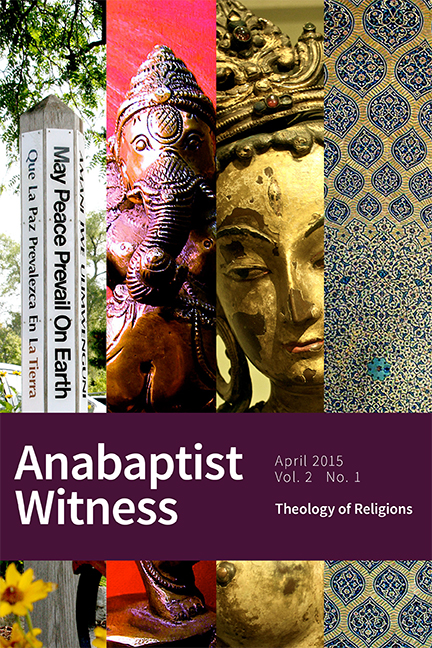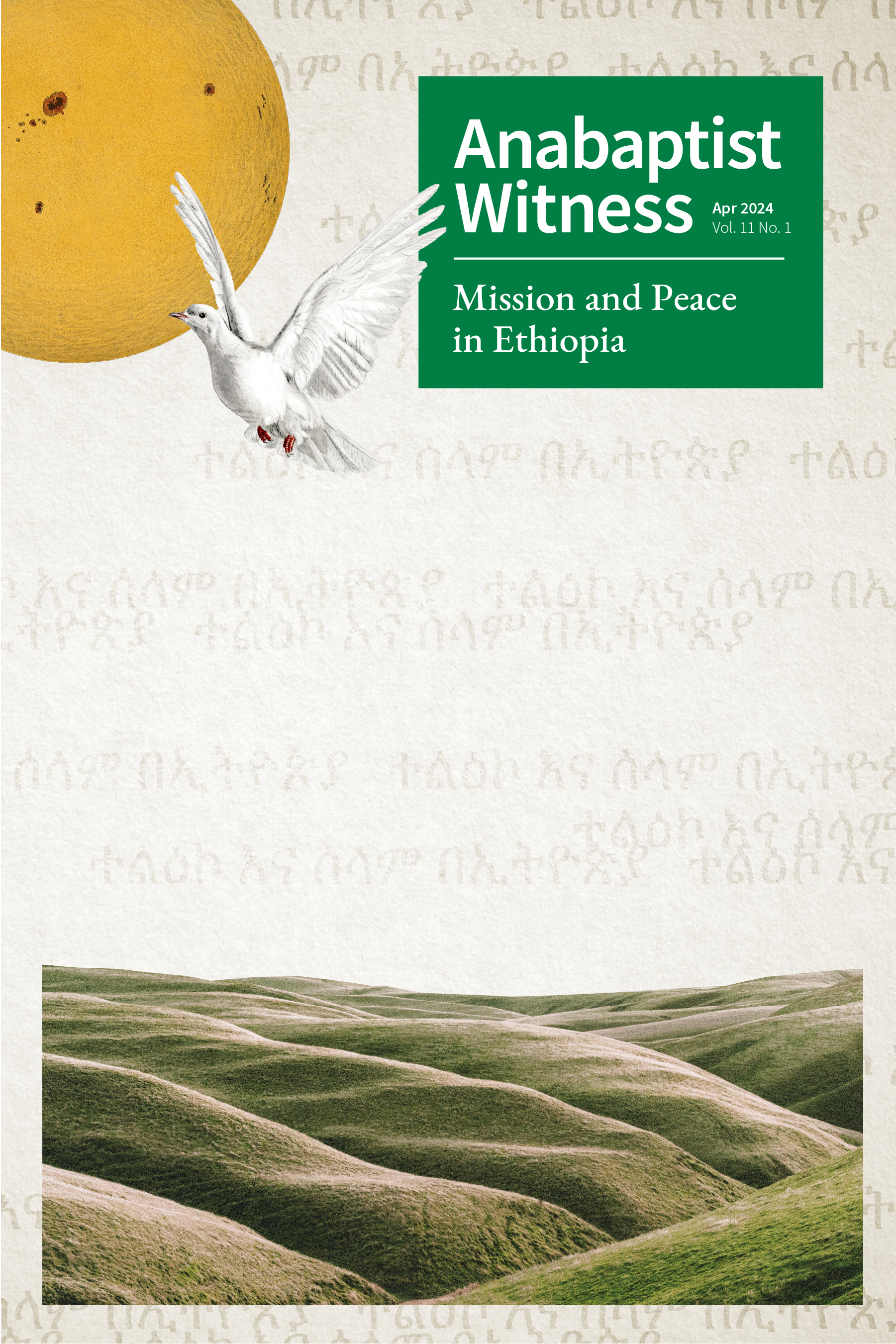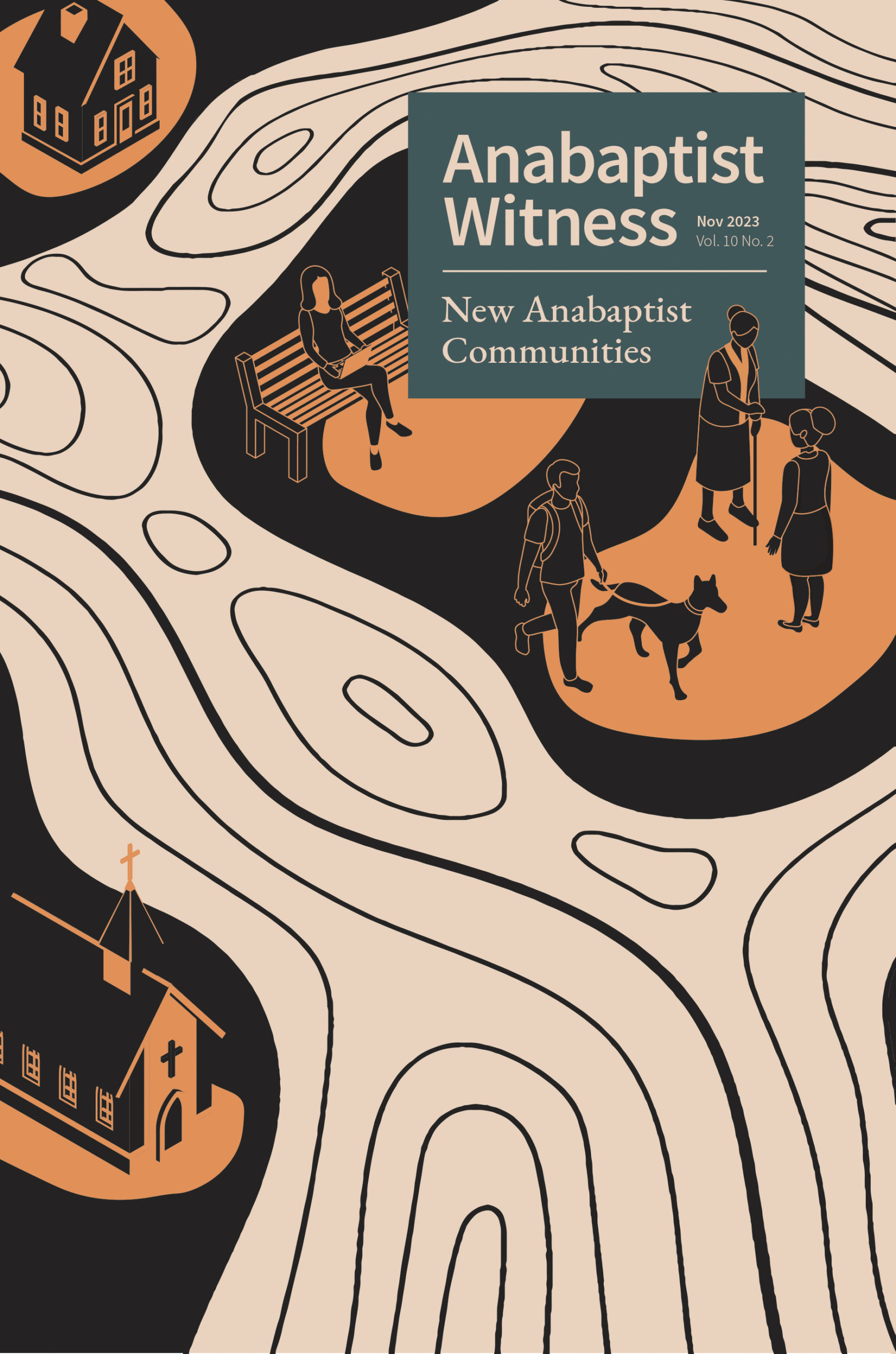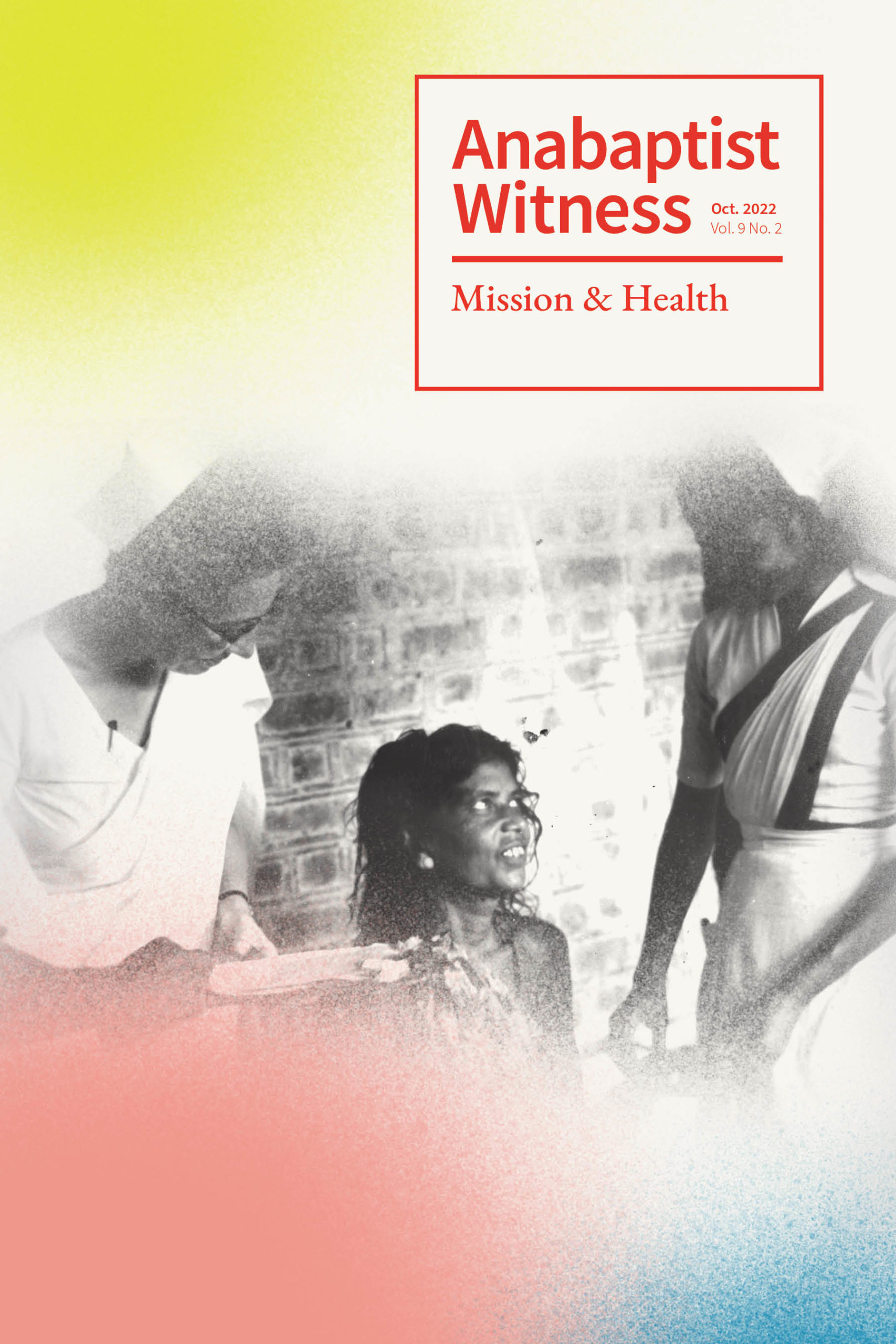Anabaptist Mission and Theology of Religions
About This Issue Download this issue
Anabaptist Mission and Theology of Religions
Anabaptist witness, like Christian witness more generally, necessarily involves interaction with persons and communities of other religions and none. This necessity arises from two considerations. The first is the missional constitution of the church: the church is sent into the world as a liberation community embodying and announcing God’s peaceable reign. As sent, the church’s activity takes the form of witness to its sender, Jesus Christ. This witness, as is evident in global Anabaptist witness today, includes worship, prayer, collaboration, protest, sharing, friendship, argument, teaching, learning, and many other practices undertaken to, for, and with the world.
The other consideration is the reality of globalization and the geographical extension of religious pluralism that it has enabled. Although it is true that Christianity has always been in contact with religious others, many observers suggest that globalization represents a new context for Christian witness. Mass transportation and media enable people, goods, and ideas to circulate around the globe at unprecedented speeds. If rampant economic inequalities mean the world is far from “flat,” it is yet connected across its peaks and valleys like never before.
Consideration of the church’s missional constitution and context lead, therefore, to the claim that interaction with religious others is a necessary element of Anabaptist witness. But what does this interaction look like? What should it look like? What resources do Christian theology and missiology offer as guides to understanding and engaging other religions? The essays in this issue of Anabaptist Witness offer various responses to these questions, questions that make up the field of the “theology of religions.”
The Finnish Pentecostal theologian Veli-Matti Kärkkäinen suggests that the Bible provides two guidelines or parameters within which Christian theologies of religions fall: first, God desires the salvation of all and, second, salvation is only available in and through Jesus Christ. Kärkkäinen states that “how one puts these two affirmations together and accounts for the built-in tension between them largely determines one’s theology of religions.”1 Theologies of religions are accordingly often placed on a spectrum ranging from “pluralist” (salvation through God, as met through any religion) to “inclusivist” (salvation through Christ, as met through any religion) and “exclusivist” (salvation through Christ, as met through the church).²
While some of the contributors to the present volume take up similar terms and reflect explicitly on the problems typically associated with the theology of religions, many do not. However, all of them explore how Christians ought to interact with persons and communities of other religions. Although the contributors might be categorized differently, they all point to lived encounter with persons and communities of other religions as the center of any theology of religions. It is in encounter that identity markers and community borders are negotiated, and it is in encounter that religious gifts can be given and received. For some contributors encounter represents openness to “the Other”; for others it makes peacemaking possible; and for others it is the moment in which the call to conversion can be made. For all, encounter with religious others is intrinsic to Anabaptist witness.
Content in this issue can be divided into three sections. The first five articles are more formal and academic in presentation, while the next five are shaped around personal narratives. The stories are a great place to begin for those readers unfamiliar with the theology of religions. The third section, the book reviews, may also provide an entryway into the discussion. Each of the reviews is of a book or film relevant to the issue theme. The reviews also point helpfully to additional resources for those interested to explore the topic more.
The first article, by Marius van Hoogstraten, argues that theologies of religions that emphasize either the commonalities or the differences among religions evade the fragility of inter-religious encounter. He thinks his more vulnerable approach, which he develops in conversation with hermeneutical philosophy, can support Anabaptists and others working on inter-religious reconciliation. SeongHan Kim’s article likewise finds connections between Anabaptism and peaceable inter-religious encounter. Kim develops his case through a review of ecumenical statements on the theology of religions, and focuses his conclusions on his own Korean church and global Anabaptists.
Anicka Fast then relates the question of the gospel’s cross-cultural “translatability” to discussions about pluralism. She suggests that the tension between cultural particularity and universality is eased in the new humanity created by the cross. In the next article, Dorothy Yoder Nyce contends that a pluralist theology of religions aimed at inter-religious symbiosis needs a good understanding of past patterns of engagement. To that end, she plumbs various archives and reviews the history of Mennonite-Hindu interaction.
Philemon Beghela Gibungula and J.N.J. Kritzinger’s article emerges from Beghela’s work as a Mennonite missionary and educator in his own Democratic Republic of Congo. The authors review the history of Christian-Muslim strife in the DRC, summarize Beghela’s research into present attitudes about religious others there, and propose an irenic approach to peacebuilding rooted in an Abrahamic reading of the Sermon on the Mount.
The pieces by David W. Shenk, Andres Prins, Jonathan Bornman, and Sheryl Martin come from their presentations at the Council for International Anabaptist Ministries gathering in January 2015. The authors all work with Eastern Mennonite Missions on Christian/Muslim relations, and that focus is reflected in their work here. Shenk’s longer essay tells of the development of the People of God Bible study for Muslims in eastern Africa, while Prins, Bornman, and Martin briefly share stories of interactions with Muslims.
The final article comes from Andrew Bush, who speaks from his experience of working for peace among Jews, Muslims, and Christians in Palestine and Israel. Bush writes that in mission we learn God’s “surprise”: God’s “love and compassion cannot be bounded by walls which we might construct of concrete, of national pride, of theological exclusivity, or of religious affiliation.” We hope that this issue of Anabaptist Witness will deepen your surprise!
Jamie Pitts, Co-Editor
1) Kärkkäinen, Introducing the Theology of Religions: Biblical, Historical, and Contemporary Perspectives (Downers Grove, IL: IVP, 2003), 26–27.
2) Ibid., 24–25. Kärkkäinen prefers the terms “Theocentric,” “Christocentric,” and “Ecclesiocentric.” He adds the category “Realitycentric” for pluralists who suggest that religions lead to “ultimate Reality,” rather than God.





